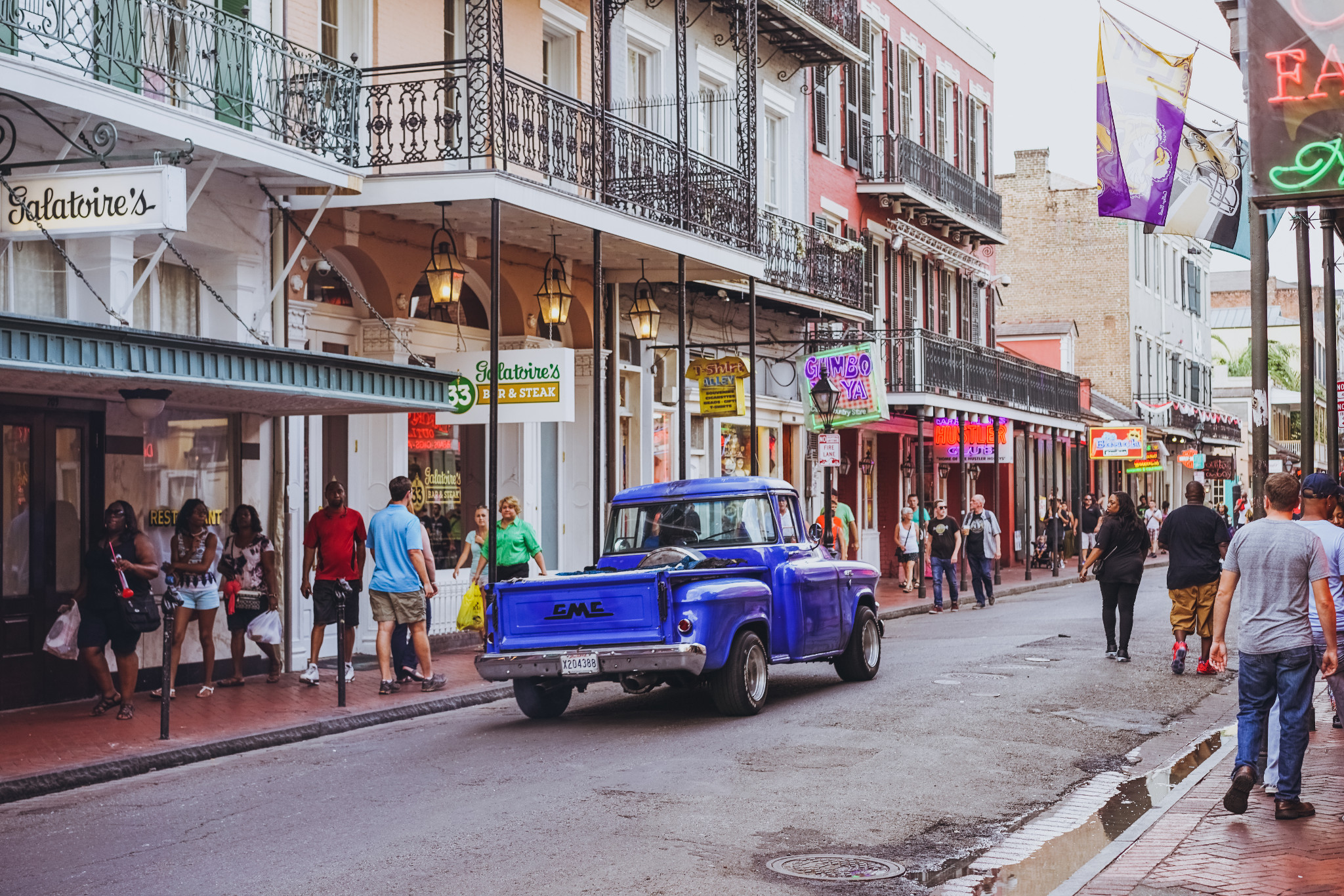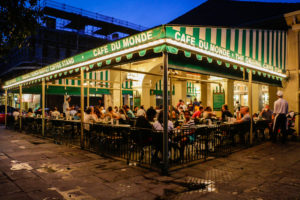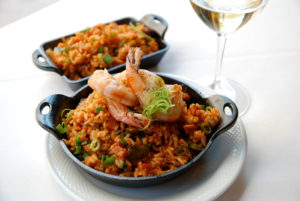
Last week we explored some ways to indulge in the local culture when spending time in New Orleans. Today Riddle and Associates shares some of the area’s unique food and entertainment options.
Extraordinary Food Options
To engage any New Orleanian in conversation, simply ask where to find the town’s best po’ boy or gumbo. A passion for good food is the thread running through every neighborhood, home, and restaurant in New Orleans. Through New Orleans cuisine, visitors experience the city’s heritage as well as its bright future in every bite. Here’s everything you need to know to get started exploring New Orleans food.
A culinary and spiritual symbol of New Orleans, gumbo is a melting pot of flavors mingling in a rich savory roux. The word is believed to stem from West African roots originating from the word for okra. European, Native American, and West African ingredients and techniques evolved in a delicious mix, resulting in a diverse array of recipes. Thus, who makes the city’s best bowl of gumbo is always a hotly debated topic. Whether your favorite is meat- or seafood-based, or a combo, here are places to begin. Locals rave about Restaurant R’evolution’s “Death by Gumbo,” featuring quail stuffed with rice, Andouille sausage and oysters. For a more classic version, try Chef Leah Chase’s crab, shrimp, chicken and sausage gumbo at Dooky Chase’s Restaurant.
 Visitors have joined the line at the Crescent City’s most honored institution, Café du Monde, since the French Quarter coffee stand first began serving up beignets and café au lait, their sole menu items, in 1862. It’s 24/7 and there are no reservations, so scout a table then place your order. Be prepared to leave with a healthy coating of powdered sugar—it’s impossible to contain the sweet goodness, and that’s part of the magic. For park-side locale, try Morning Call’s beignets, another beloved 24-hour café dishing up sweet eats.
Visitors have joined the line at the Crescent City’s most honored institution, Café du Monde, since the French Quarter coffee stand first began serving up beignets and café au lait, their sole menu items, in 1862. It’s 24/7 and there are no reservations, so scout a table then place your order. Be prepared to leave with a healthy coating of powdered sugar—it’s impossible to contain the sweet goodness, and that’s part of the magic. For park-side locale, try Morning Call’s beignets, another beloved 24-hour café dishing up sweet eats.
In the late 1920s, two New Orleans brothers set out to feed striking streetcar operators, a.k.a. “poor boys,” with the cheapest fresh ingredients on hand loaded into morning-baked bread. That legacy lives on today from gas station counters to white tablecloth restaurants. Flaky-on-the-outside, soft-on-the-inside bread is crammed full of lightly battered shrimp or oysters, or maybe seasoned beef with gravy known as “debris,” and dressed with lettuce, tomato, pickles, and mayo. Portions of this beloved New Orleans food are always large and the taste always soul satisfying. You can’t go wrong at Domilise’s Po-Boys, serving classic po’ boys at this Uptown spot for a century. Opt for shrimp or roast beef, or go for the combo with a surf and turf. Travel down to Mid-City near the Fairgrounds Race Course for Liuzza’s By the Track’s famous BBQ shrimp po’ boy paired with a spicy Bloody Mary. It’s a combination that’s worth the trip.
 What is jambalaya and what’s the difference between Cajun and Creole versions? The savory dish consists of rice slow cooked with a spicy sauce of meat and vegetables, a bit like Spanish paella. Creole cooking, historically associated with city living, always incorporates tomatoes. Cajun cooking, thought to have originated in more rural areas, rarely features tomatoes. Both versions contain the New Orleans culinary treasure known as the Holy Trinity: onions, celery and green bell pepper. Sample the smoked sausage, shrimp, and chicken jambalaya at casual dining mecca Gumbo Shop. Coop’s Place, a lively bar and restaurant serves particularly delicious jambalaya.
What is jambalaya and what’s the difference between Cajun and Creole versions? The savory dish consists of rice slow cooked with a spicy sauce of meat and vegetables, a bit like Spanish paella. Creole cooking, historically associated with city living, always incorporates tomatoes. Cajun cooking, thought to have originated in more rural areas, rarely features tomatoes. Both versions contain the New Orleans culinary treasure known as the Holy Trinity: onions, celery and green bell pepper. Sample the smoked sausage, shrimp, and chicken jambalaya at casual dining mecca Gumbo Shop. Coop’s Place, a lively bar and restaurant serves particularly delicious jambalaya.
The list of restaurants and food to eat could go on for days. A few honorable mentions for classic New Orleans disses are pralines (Loretta’s Authentic Pralines), king cake (Dong Phuong Oriental Bakery), and Louisiana oysters (Acme Oyster House).
The Nightlife
Though New Orleans looks good in the daytime, the city doesn’t truly come alive until the sun has set. Many establishments in New Orleans stay open well after 2 a.m. – the standard closing time in most other American cities – making it a place where you can embark on multiple adventures in one night. Whether you’re into rowdy nights, arcade games, cult classic movies, fried food, live music or sweeping views of the skyline, this city has it all.
The most bustling nightlife scene (other than Bourbon Street) can be found on Frenchmen Street in the Faubourg Marigny neighborhood. It’s home to a number of intimate live music venues including DBA, the Spotted Cat and Blue Nile, among others, that feature local bands and DJ’s. There’s also an outdoor art market if you need to catch your breath in between sets, and plenty of street performers if you don’t feel like committing to the clubs’ cover charges.
If you are a true night owl see a midnight movie at the Prytania Theater. Situated Uptown, it hosts a steady rotation of new releases and a late-night movie series showing cult classics such as Rocky Horror Picture Show, Little Shop of Horrors and Room.
 Over in the Garden District on St. Charles Avenue, the trendy but classic Pontchartrain Hotel features a lively rooftop bar called Hot Tin, a reference to the Tennessee Williams’ play, Cat on a Hot Tin Roof. The bar staff serves refreshing and original cocktails while the outside balcony offers a dreamy, sweeping views of the city’s skyline.
Over in the Garden District on St. Charles Avenue, the trendy but classic Pontchartrain Hotel features a lively rooftop bar called Hot Tin, a reference to the Tennessee Williams’ play, Cat on a Hot Tin Roof. The bar staff serves refreshing and original cocktails while the outside balcony offers a dreamy, sweeping views of the city’s skyline.
Experience New Orleans’ supposedly haunted history by joining one of the many-guided tours around the French Quarter. You can take your pick between ghost tours, vampire tours and even haunted pub crawls where guests are treated to a delightful mix of both fact and fiction. Hosted by theatrical and knowledgeable guides, these tours will take you to some of the city’s oldest and spookiest locales.
Though some would argue it’s a tourist trap, Bourbon Street is a spot you really should have on your bucket list. Internationally known for its neon drinks, late-night dance clubs and the place where you catch beads year-round off the balcony, this iconic pedestrian street truly captures the spirit of New Orleans.
The Sounds of New Orleans
Music is truly the heart of this city. Jazz, brass, R&B, soul and many mixes are always radiating throughout the streets. Take a stroll down Frenchmen Street and take in the vibrant blocks of cafes, music clubs and restaurants including Snug Harbor, d.b.a. and the Spotted Cat. New Orleans has produced its share of musical giants, from greats like Louis Armstrong, Dr. John, Allen Toussaint Al Hirt to contemporary acts like Trombone Shorty, Big Freedia and Hurray for the Riffraff. Preservation Hall on Bourbon Street is always a hit, but also visit the Mother-In-Law Lounge on Claiborne Avenue, Rock-N-Bowl in Mid-City, the Maple Leaf Uptown and Vaughn’s in the Bywater. These local dives and music venues will keep you dancing all night.
Summer in the South Prep
The weather in June tends to be warm and humid so it is best to dress light for summer, and for those brief showers and thunderstorms you should bring your umbrella or a plastic poncho. Don’t forget a good pair of walking shoes or sandals to see all the great sights and walk the exhibit floor in comfort.
Laissez Les Bon Temps Rouler
Laissez les bon temps rouler, “let the good times roll,” is one of New Orleans’ many mottos. The city makes visitors feel welcome with ease and the joy of the local residents is contagious. Visitors to Clean 2019 will be exposed to the largest industry show with state-of-the-art products and education sessions to boost their business in one of the most exciting cities in the country. Do not miss the perfect opportunity to combine business with seeing new sights and having some good old fun!
For more information about New Orleans, go to www.neworleans.com
###########
PHOTO CREDITS
All photos are courtesy of the New Orleans & Company
Top Right: French Quarter is credited to Paul Broussard
Mid Left: Cafe du Monde is credited to Paul Broussard
Lower Right: Jambalaya is credited to Joyce Bracey
Lower Left: Steamboat Natchez credited to Paul Broussard













